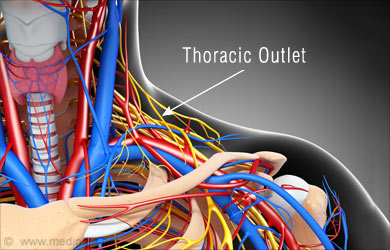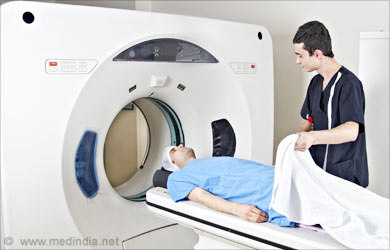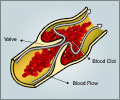- Thoracic outlet syndrome - (http://www.mayoclinic.org/diseases-conditions/thoracic-outlet-syndrome/basics/definition/con-20040509)
About
Thoracic outlet syndrome (TOS) is a rare condition that occurs when blood vessels or nerves become compressed in the space between the collarbone and the first rib (thoracic outlet).
There are several causes of thoracic outlet syndrome. They include physical trauma resulting from motor accidents, anatomical impairments (extra rib), repetitive injuries from job-related or sports-related activities, poor postures, pressure exerted on joints and pregnancy. Sometimes the reasons cannot be determined easily.

Symptoms of Thoracic outlet syndrome (TOS)
There are three types of Thoracic outlet syndrome (TOS) based on the symptoms. They are -
Neurogenic thoracic outlet syndrome, which is characterized by compression of the brachial plexus which is a network of nerves that originate at the spinal cord. These nerves control the movement of muscles of and are responsible for the sensation in shoulder, arm and hand. This category is observed in the majority of Thoracic outlet syndrome (TOS) cases.
Common symptoms of thoracic outlet syndrome include -
- Wasting or loss of muscle in the thumb’s fleshy base (Gilliatt-Sumner hand)
- Numbness / tingling in arm or fingers
- Pain in the shoulder, neck or hand
- Weak grip
Vascular thoracic outlet syndrome occurs when one or more of the veins or arteries below the collarbone get compressed.
Signs and symptoms include:
- Discoloration (bluish color) on hand

- Pain and swelling in the arm possibly due to blood clots
- Blood clot in veins or arteries in the upper body
- Lack of color in fingers or entire hand
- Weak pulse / no pulse in the affected arm
- Cold fingers, hands or arms
- Fatigue in the arm after activity

- Numbness or tingling in fingers
- Throbbing lump near collarbone
Nonspecific-type thoracic outlet syndrome, also known as “disputed thoracic outlet syndrome” is characterized by chronic pain in the shoulder and neck region which worsens with physical activity. In the case of this subtype of Thoracic outlet syndrome (TOS), the cause of the pain cannot be diagnosed. Some doctors are not aware that it exists while others believe that it is common enough.
Signs and symptoms include:
- Discoloration (bluish color) on hand
- Pain and swelling in the arm possibly due to blood clots
- Blood clot in veins or arteries in the upper body
- Lack of color in fingers or your entire hand
- Weak / no pulse in the affected arm
- Cold fingers, hands or entire arms
- Fatigue in the arm after activity
- Numbness or tingling in fingers

- Throbbing lump near collarbone
The symptoms tend to occur when an activity has to be repeated. When the symptoms are consistent and recurring, it is advisable to see a doctor. The condition is quite common among athletes, swimmers and anyone who has to indulge in repetitive activities.
Diagnosis
Thoracic outlet syndrome diagnosis is usually established by reviewing symptoms and medical history, followed by a physical examination.
Doctors may also carry out provocation tests to detect the specific cause of Thoracic outlet syndrome (TOS) and also to rule out other causes. For this test the patient is asked to move arms, neck or shoulders in various positions to help the doctor assess your symptoms.
Other tests that may help to confirm diagnosis include X-ray, Ultrasound, computerized tomography (CT) scan and magnetic resonance imaging (MRI). These tests are highly sensitive and can help to establish the exact location of compression, locate a congenital anomaly or rule out other causes.

An arteriography or venography is another test that may help to find out if an artery or vein is involved. Nerve damage can be evaluated by conducting a nerve conduction study.
Treatment
In most cases, a conservative approach to treatment is effective, especially if your condition is diagnosed early. Pain relief methods including physical therapy, is the treatment that is administered for Thoracic outlet syndrome (TOS).
Treatment may include:
- Physical therapy - involving exercises that strengthen and stretch the shoulder muscles to open the thoracic outlet, enhance your range of motion and better your posture.

- Medications such as ibuprofen (Advil, Motrin IB, others), pain medications or muscle relaxants may be administered to decrease inflammation and pain and bring about muscle relaxation. In some instances clot-dissolving medications may be injected into veins or arteries to dissolve blood clots.
- Surgical options may be considered if no other treatment is effective. However, there is riskof complications, such as damage to the brachial plexus. The patient’s muscle strength may not be regained and the symptoms may recur after surgery.
Lifestyle Remedies
If you have been diagnosed with Thoracic outlet syndrome (TOS) there are some instructions that you may be advised to follow –
- Maintain good posture
- Maintain healthy optimum weight
- Take frequent breaks to stretch or move at work
- Create a work area- that is posture-friendly and stress- free
- Apply heat or massage the painful area
- Avoid carrying heavy things on shoulder
- Adapt ways to minimize activities that will aggravate your shoulder pain
- Make sure that you consult your doctor in case of shoulder pain, especially if your work or other activities involves repetitive movements. This will help early diagnosis of Thoracic outlet syndrome (TOS) which will in turn prevent permanent nerve damage.
- Make sure you stretch and exercise every day to strengthen muscles and maintain optimum weight








